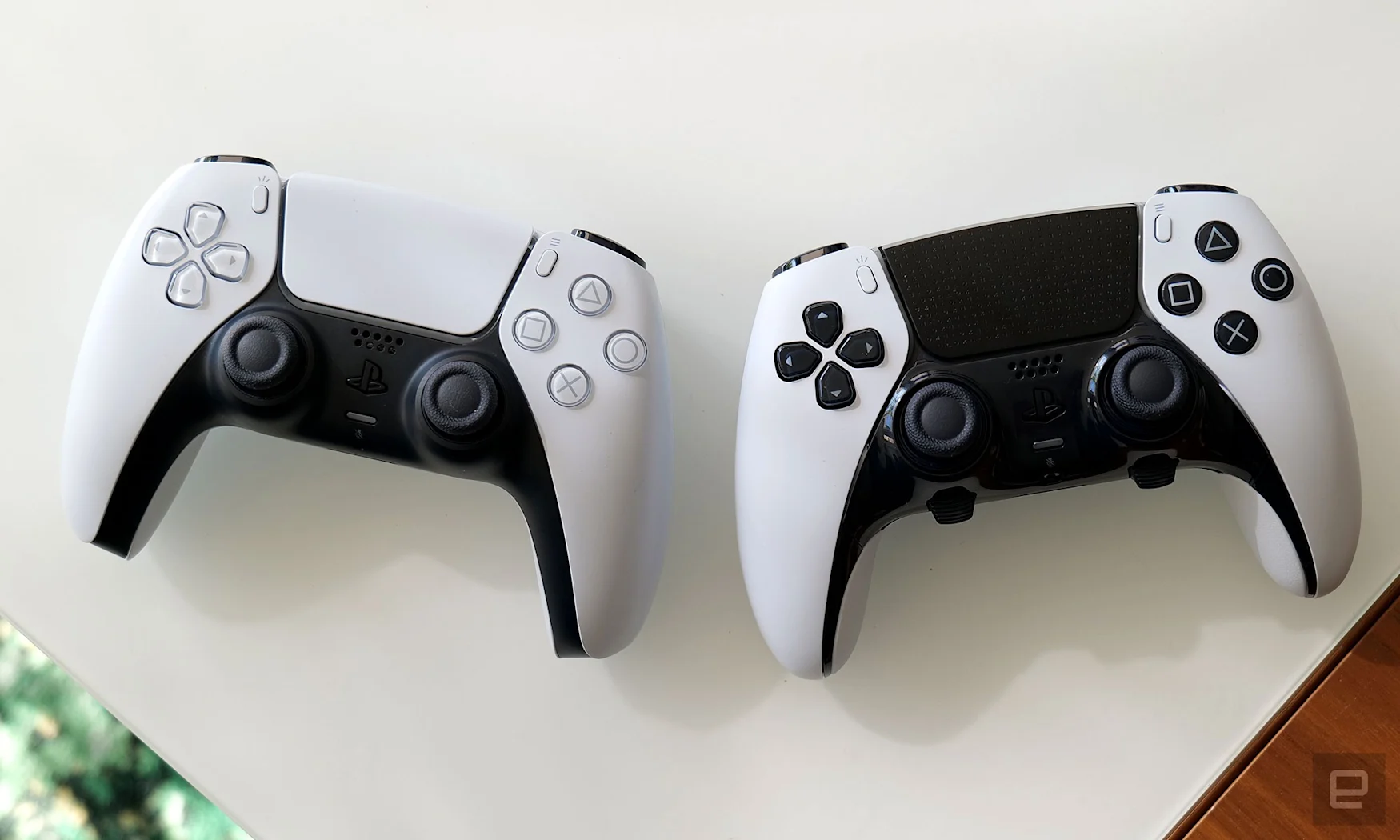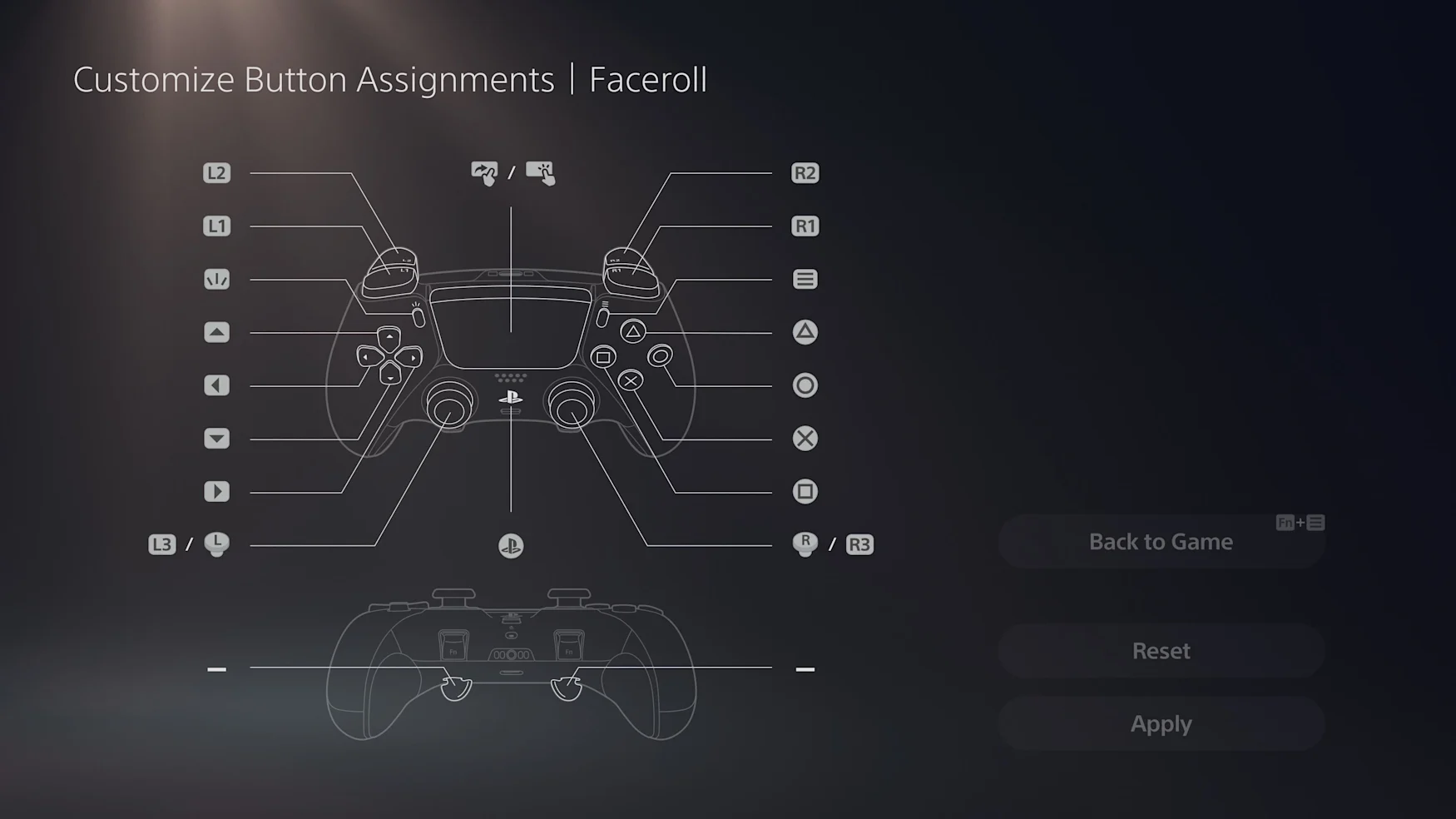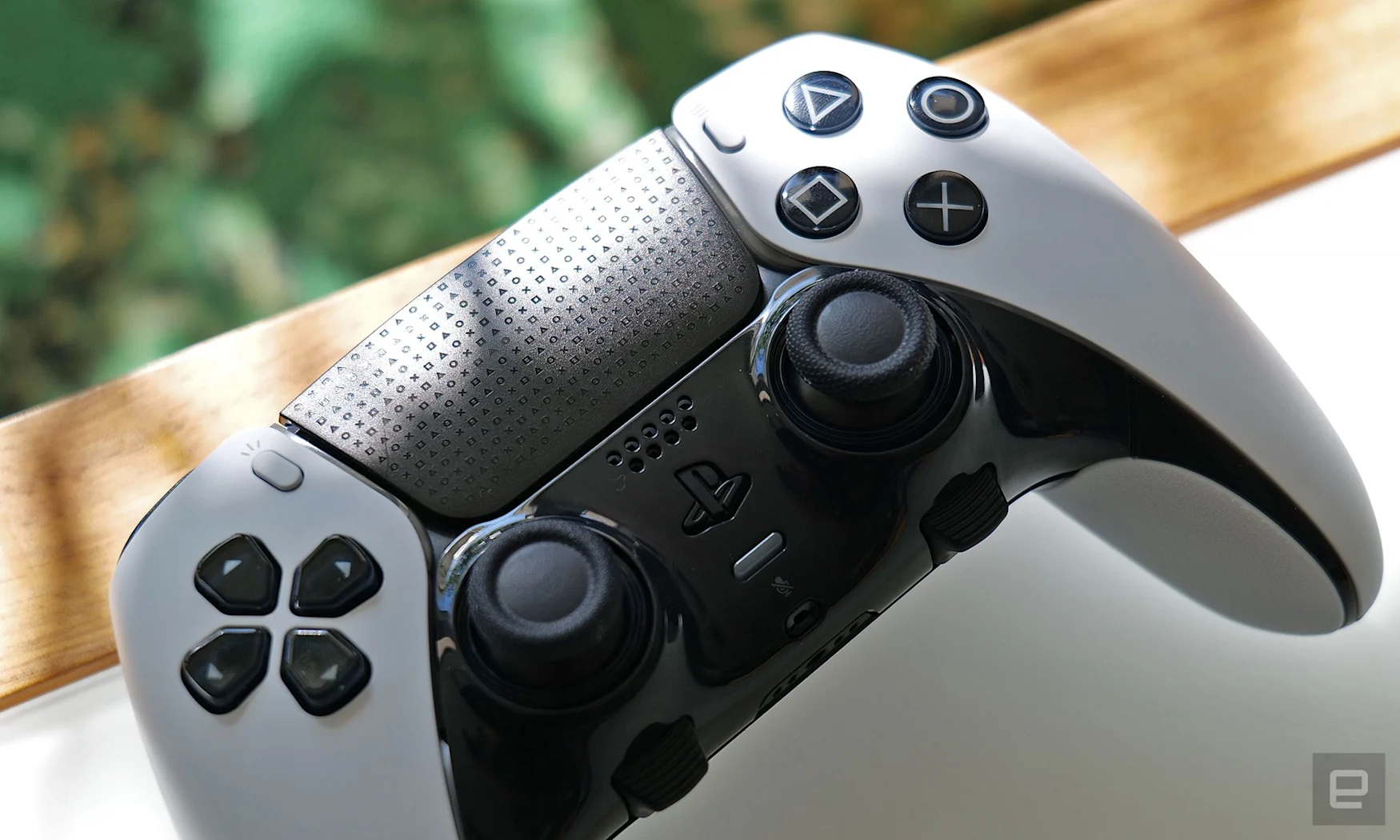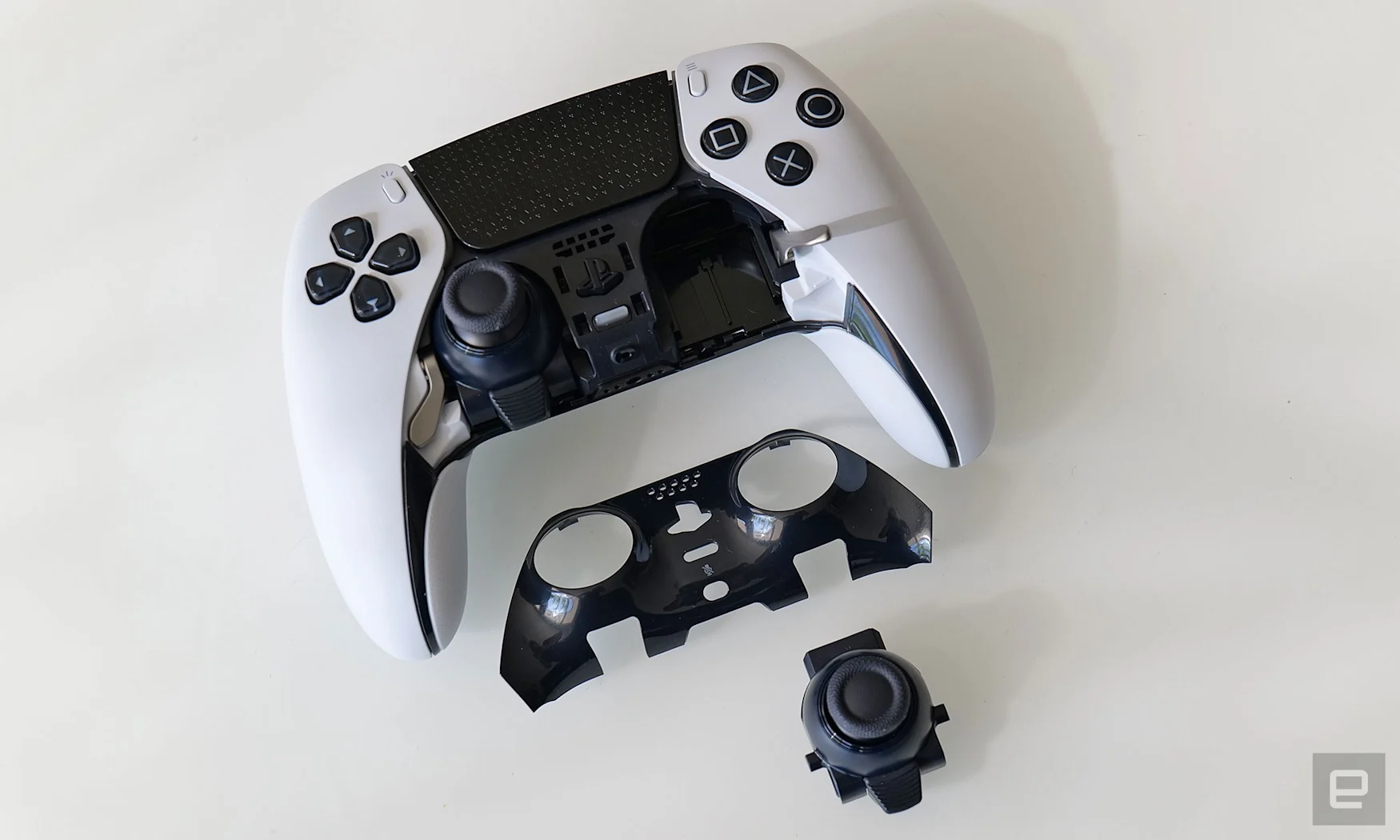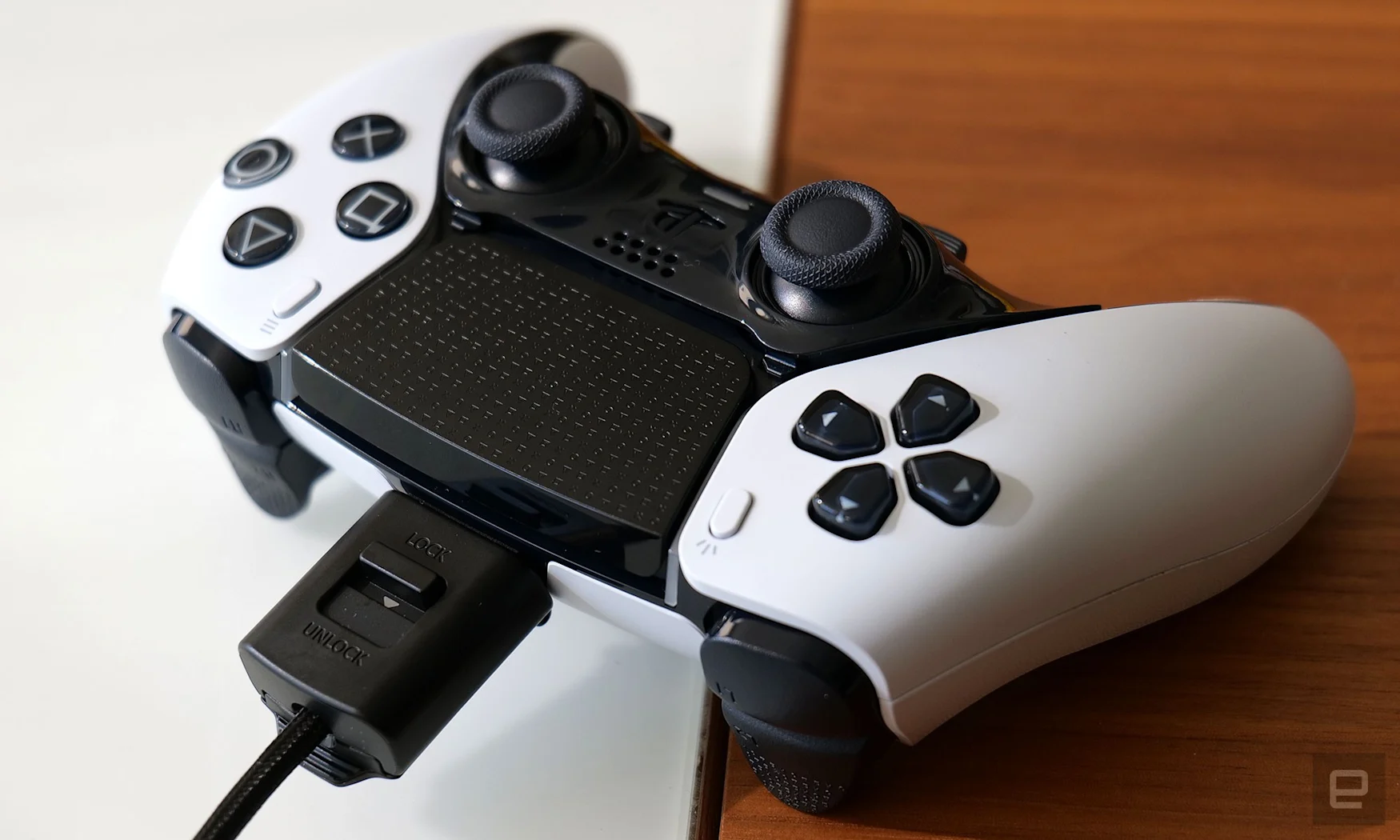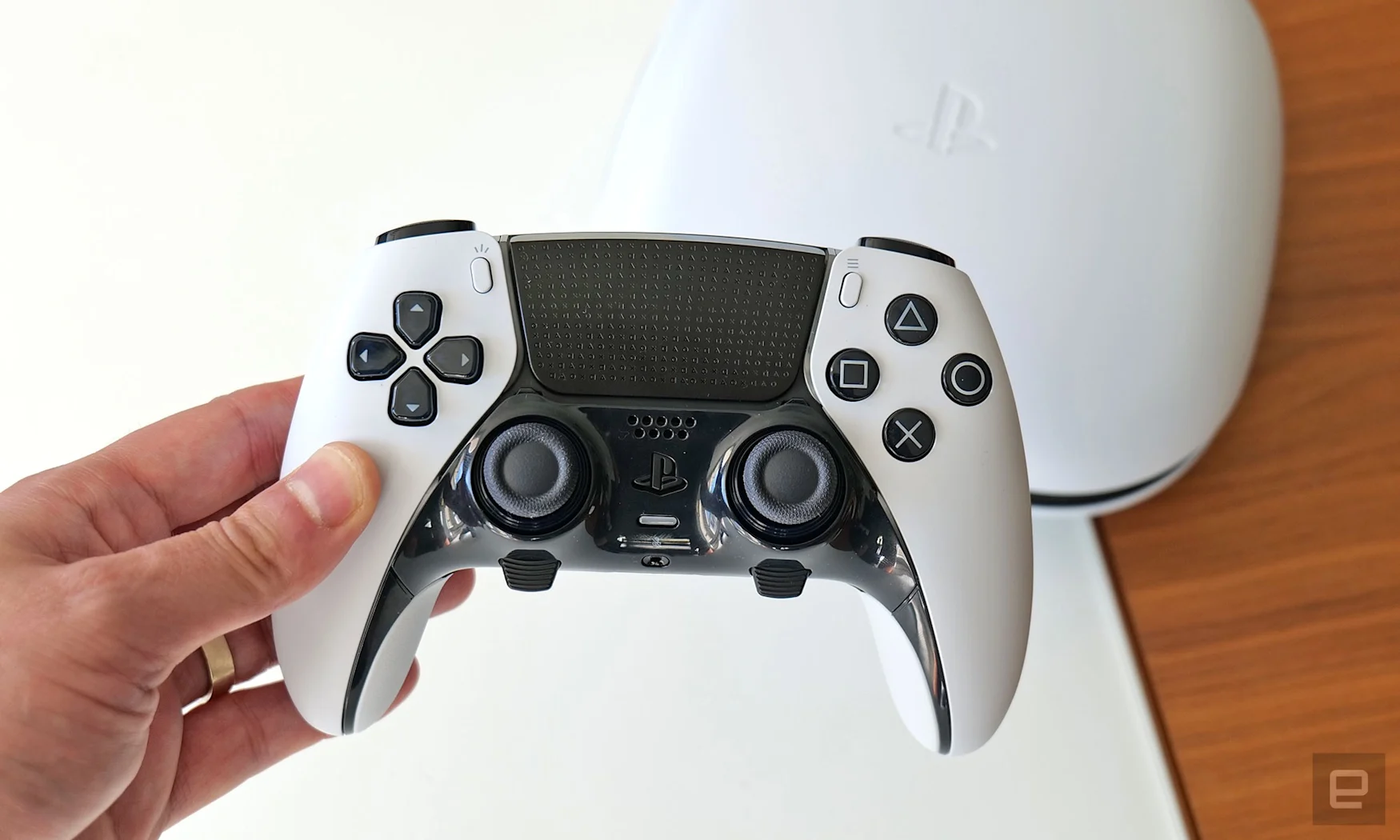It's surprising that Sony took so long to create its own version of a high-end gaming controller given that the original Xbox Elite controller was released back in 2015. But now that the PlayStation 5 is more widely accessible (kind of), the business is prepared to finally demonstrate its capabilities to the public. Although the $200 DualSense Edge is a little more expensive than its competitor, it also comes with a few useful capabilities that Microsoft's controller lacks, as well as a potentially significant flaw.
Design
Sony didn't deviate much from its standard blueprint for the Edge. With the exception of a black D-pad, face buttons, and touchpad decorated with a faint pattern of the brand's distinctive and icons, the Edge seems nearly identical from the top. When you realise that there are two little nubs below the analogue sticks that are function buttons for modifying the button assignments on your controller, things start to get interesting.
Backwards, there are slots for the gamepad's detachable rear paddles and two switches on either side of the shoulder triggers for altering their pull length. The controller has two sets of rear paddles: a longer, more conventional lever set and a shorter, stubby half-dome set. I preferred the latter set. There are also three interchangeable joystick nubs supplied (normal, short-stemmed convex, and long-stemmed convex), as well as a cable lock that can stop the USB-C cord from being accidentally pulled out.
The back paddles and the thumbsticks both attach magnetically, making it incredibly easy to try out various combinations before settling on one you like. In shooting games, the long-stemmed domed thumbstick can be useful for snipers, especially if you like to play at lower sensitivity. But making the controller as comfy as possible was more important to me than trying to gain an advantage.
The completely replaceable analogue sticks are one of the Edge's standout features. The shroud covering the analogue sticks may be removed by swiping the release toggle on the back. This reveals detachable modules that connect by USB-A and can be quickly swapped out. This means that you can easily purchase replacement thumbstick modules for $20 each when you start to encounter some controller drift, which you will, given enough wear and tear. Hardcore gamers that invest hundreds or thousands of hours into their consoles may find that they can save a significant amount of money over time. Just replace one joystick if it begins to act strangely, or change both sticks together and have a gamepad that is nearly new.
The Edge also includes a hardshell carrying bag that resembles an extra-large space egg and completes the package. It contains a small mesh pocket and a softly padded interior for any extra equipment you might require (like the included charging cable). A clever velcro pass-through flap at the back of the case also makes it possible to run a cord inside so that you may charge the controller while it is safely tucked within.
Software and features
Setting up customised button configurations is another significant advantage the Edge has over competitors (particularly third-party products like Scuf's Reflex). The PS5 can save even more settings and has four quickset options available. By hitting one of the function buttons and one face button simultaneously, you can change layouts in under a second. I really like how the PS5 displays a straightforward tour when you attach the controller for the first time so you can set things up. And all you have to do to go back to your button presets is enter the settings menu on the console whenever you want to.
You may also modify the deadzone of your joysticks, change their sensitivity, and even set the triggers' actuation point, among other useful functions. In order to prevent unintentional pushes, you can instruct the controller to ignore shallow pulls based on your preferences. This also functions in conjunction with the slider on the controller's back, which allows you to change the triggers' actual travel distance to one of three options (short, medium, or long). This is useful when switching between racing games, where you want complete analogue feedback, and first-person shooter games, where you want a real hair trigger setup.
In-game
Also, while the Deep Triggers of the DualSense are excellent for racing games, the Long Pull in fighters or beat 'em ups like Streets of Rage 4 is a little bothersome. Yet by simply adjusting the toggles on the rear, I can drastically reduce the pull, giving the impression that everything is snappier and more responsive.
However, I should point out that although some other high-end controllers, such as the Xbox Elite Series 2, provide a variety of D-pad options, I believe that both of them are inferior to Sony's arrow-shaped model. I can imagine the cable lock being handy in tournament scenarios when you want the security of a connected connection but don't want to worry about your USB cord being accidentally pulled out, even though I'll probably never use it.
My only nitpick is that I wish you could give the tiny function nubs their own set of actions. There is currently no mechanism to adjust their focus, which seems to be a bit of a waste as they are only used for switching button settings. Given that there are two nubs and I believe they are in the ideal position for throwing grenades in shooters, at the very least allow me to use one of them as an additional button.
Battery Life
The DualSense Edge's battery life, which is somehow shorter than that of the conventional PS5 controller, is one of its main flaws. As opposed to the normal DualSense's six or seven hours of use per charge, I often got five to six hours. And that's simply irritating because the individuals who would spend a lot of money on a premium controller aren't the same ones who would pay for the Edge, which is more than twice as expensive.
also highly prone to play video games for extended periods of time. Furthermore, finding a USB cord in the middle of a gunfight when your controller fails is one of the few things that can be more frustrating. Thanks to the Edge's long 10-foot USB cord, you can probably still plug it in and have the cable reach your couch even if it runs out of power.
Wrap-up
Although it might seem a bit excessive to pay $200 for a sophisticated controller (and in a way, it is), after using the DualSense Edge, I can understand the draw. It offers a recognisable look along with a few extra features, such as simple button remapping, several joystick nubs, movable back paddles, and more. Yet compared to certain third-party solutions, such as those from Scuf, the Edge is actually a little bit less expensive.
This lacks a module for the joystick that can be changed. Its short battery life is undoubtedly a drawback, and I wish Sony had added support for a second pair of paddles in the back, as you do with other high-end gamepads. Yet, if I had to pick only one controller to use with my PS5 till it breaks, it would be the DualSense Edge.



